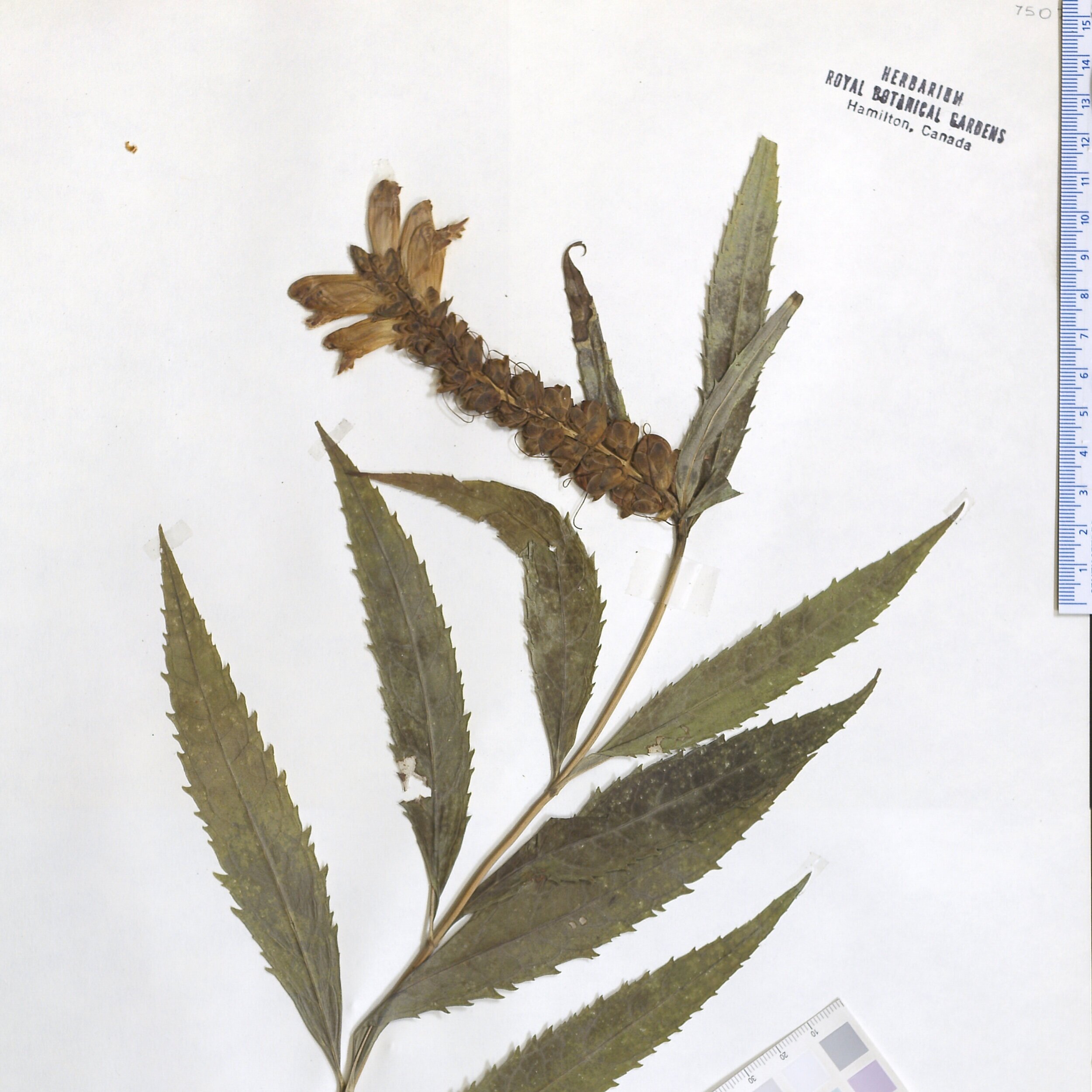Botanical Brain Teaser #2: Swamp Beauty
The following is an article that I wrote as an intern at the herbarium of the Royal Botanical Gardens. It appeared in RBG’s magazine Paradise Found and in every issue, the current botany intern composes a puzzle for readers to solve. They choose a specimen from among the cabinets and describe the species leaving enough of a mystery that readers must guess and write-in their answers. I loved writing these, so I’m sharing them here along with images of the herbarium specimens that accompanied them. I cropped this top image to obscure the label so you can make a guess and post it in the comment section at the bottom. Then, click the “Answer” link to see the full herbarium specimen image including the label to check if you were right. Enjoy!
(top image is by R.W. Smith as part of Michigan Flora Online)
Can you guess the name of the plant in this RBG herbarium specimen? The specimen was collected on September 19th, 1966 by D.G. Stoker, who collected a variety of specimens in the late summer of that year in the vicinity of Hamilton. This specimen in particular was found in a moist valley in Waterdown. This habitat description, though sparse, is typical for the species, which inhabits wet areas near streams and ponds in Easter North America from Quebec south to Georgia and West approximately to the Mississippi River. As you can tell from the appearance of the plant in mid-Sepember, it is characteristically a late-bloomer, and one of the last herbaceous plants to continue blooming in the fall. In a mild autumn such as the one just past, these distinctive flowers can be spotted even well into November.
Our mystery species, like many other plants, has an intimate and fascinating relationship with several insect species. One of these, the state-butterfly of Maryland, completes its entire life cycle on or near this plant. The adult females are very choosy, laying their eggs almost exclusively on the undersides of leaves of this plant in early summer. The explanation for this selective behaviour is a good one: as the baby caterpillars feed on the leaves throughout the following months, they incorporate into their bodies a bitter tasting chemical called catalpol that the plant produces to make itself poisonous to its enemies. Experiments have shown that if these caterpillars (and even the adult butterflies they metamorphose into) are eaten by a bird such as a blue jay, the bird will vomit the insect back up. So, essentially, this butterfly has not only circumvented our mystery plant’s defenses, but actually hijacked them and used it to increase its own survival! Imitation is the sincerest form of flattery, but outright theft? How rude.
The flowers borne at the top of this plant are bright white with a gaping “mouth” into which bumblebees (Bombus spp.) crawl to collect a nectar reward while providing the service of pollination to the plant. It is said that while a bee is rummaging around in there, the movement makes it look as though the flower is chewing, then spitting out, its food. Speaking of food, one study found that Ouachita Map Turtles (a close relative of our Northern Map Turtle) consume leaves of this plant in great quantities comprising over 50% of their total diet. And if you know the common name of this plant (or the translation of its Greek genus name), you are sure to find that a curious coincidence.




